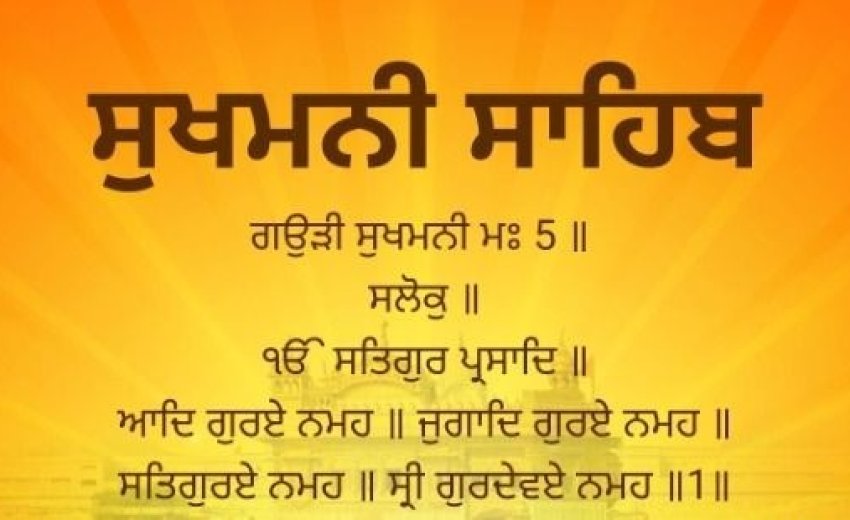In the Sukhmani Sahib, there's a special word 'rahau' meaning 'pause'. It carries deep significance in understanding the sacred teachings of Sukhmani Sahib. This text is cherished as the 'consoler of the mind' and the 'Jewel of Peace' among Sikhs. When people recite it, they often feel a calmness wash over them.
Sukhmani Sahib
Sukhmani Sahib is a fundamental scripture in the Sikh tradition, found in the Guru Granth Sahib. It beautifully imparts Sikh teachings in a clear and moving way, touching the hearts of its readers.
The special bani, made up of 24 sections called ashtpadis, starts with a call to the Supreme Being, known as adi-gure, jugadi-gure, sat-gure, and sri-gurdeve - the first guru, guru of all eras, the true guide, and the great Divine Guide. It advises that to find peace, one must regularly remember the Name - the Word of the Almighty. Guru Arjan Dev teaches that the path to understanding God is through Namsimran, or repeating God's Name.
As humans, we often get caught up in our desires and attachments, losing sight of the greater power that created us. This creates a sort of illusion, making us forget about the Creator. But by surrendering ourselves completely to the will of the Creator and seeking His grace, we can overcome negative traits like anger, greed, and attachment.
Practicing Namsimran, or repeating the name of the Divine, helps us purify ourselves and connect with the higher power. According to Guru Arjan Dev, the Brahmnjnani is someone who is free from these weaknesses. They are portrayed as individuals who fully merge with the Supreme Being, receiving the ultimate blessings from Waheguru. The eighth ashtapadi, or stanza, describes the qualities of a Brahmnjnani in detail.
jaisay jal meh kamal alayp.
barahm gi-aanee sadaa nirdokh.
jaisay soor sarab ka-o sokh.
barahm gi-aanee kai darisat samaan.
jaisay raaj rank ka-o laagai tul pavaan
"The Brahmnjnani is always unattached, as the lotus in the water remains detached; always unstained, like the Sun, which gives its comfort and warmth to all. He looks upon all alike, like the wind, which blows equally upon the king and beggar...To him friend and foe are the same...Within his mind, he is the most humble of all."
The Brahmnjnani, highly respected, is also known as gurmukh, sadhu, or saint. He holds the highest spiritual position, so much so that the Guru considers him the Supreme Being Himself - that's how deserving and holy he is. He is like the earth, valued equally by those who dig it with a shovel and those who adorn it with sandalwood. He is completely free from worldly attachments and puts all his trust in God. "The True One is on his mind, and the True One is upon his lips. He sees only the One. O Nanak, these are the qualities of the Brahmnjnani." This very Truth can be realised only in the company of realised persons but with His Grace only.
Sukhmani Sahib is a cherished prayer among Sikhs, often recited in the mornings. It was penned by Guru Arjan in Rag Gauri, aiming to comfort a devoted follower enduring immense suffering. Legend has it that upon hearing it, the devotee found solace and healing from both physical agony and emotional distress.
Those who embrace Sukhmani Sahib with love and devotion discover a profound sense of tranquility. Its verses have a remarkable ability to ease weary spirits, invigorate the mind, and uplift the soul. Ultimately, the prayer guides individuals towards personal growth and a deeper understanding of themselves.
*Based on an article by Kulbir Kaur, published in Times of India on 21st October 2011
